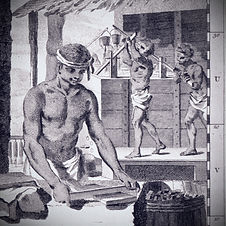Merry Christmas and a prosperous New year, Our festive cakes are available for reasonable prices, place your order now.

A Journey of Heritage and Learning
Reviving the Art of Indigo and Kola Dyeing in Sierra Leone:
Reviving the Art of Indigo and Kola Dyeing in Sierra Leone: A Journey of Heritage and Learning. I am thrilled to announce the revival of one of Sierra Leone’s most beautiful and time-honored traditions: the art of indigo and kola dyeing. This project is not just about creating beautiful fabrics; it’s about breathing new life into a cherished cultural practice that has been part of our identity for generations. By reintroducing this ancient craft, I hope to inspire our community, especially young people, to take pride in our heritage and develop the skills to keep our culture alive.ural legacy vibrant and strong!
Here’s a general timeline of the history and evolution of indigo in Africa. This timeline focuses on its cultural, economic, and artistic significance.
Timeline of Indigo in Africa

3000 BCE
Indigo Dyeing Origins
Evidence suggests that indigo dyeing likely originated in Egypt along the Nile Valley. Egyptian mummies were sometimes wrapped in indigo-dyed linen, showcasing its early cultural value.

2000-1000 BCE
Spread Across North and West Africa
Indigo dyeing techniques spread to other African regions, notably West Africa, through trade routes and migration. The Phoenicians, skilled in textile production and trade, are believed to have influenced indigo use in North Africa.

1000 BCE – 400 C
Trans-Saharan Trade and Expansion of Indigo Culture
Indigo became a valuable item in the trans-Saharan trade, particularly among the Fulani and Hausa communities in West Africa, which developed expertise in dyeing techniques. By this time, indigo was a highly prized dye.

1100-1500 C
Boubou Garment Tradition and Indigo Dyeing
In West Africa, the boubou, a traditional indigo-dyed garment, became a significant cultural symbol, particularly among the Yoruba of Nigeria, the Mandinka of Mali, and the Dogon of Mali. Dye pits in places like Kano, Nigeria, gained historical importance as centers for large-scale indigo dyeing

1600s – 1700s
Indigo as a Symbol of Wealth and Social Status
Indigo-dyed fabrics became a symbol of wealth, social status, and spiritual significance across West African societies. Nobility and royal families wore indigo-dyed textiles, particularly during special ceremonies and rituals

1800s
Impact of Colonialism
With the arrival of European colonizers, the local production and trade of indigo began to decline due to European industrial dye production. However, some African communities continued indigo dyeing as a cultural practice and resistance to colonial influence

1950s – 1960s
African Independence and Cultural Renaissance
During the wave of independence across African nations, indigo and other traditional textiles saw a resurgence in popularity as symbols of African identity and pride. Artists and designers incorporated traditional dyes and fabrics into contemporary designs

1970s – 1980s
Revival of Traditional Indigo Dyeing Techniques
Interest in preserving indigenous crafts sparked a renewed focus on traditional textile production, including indigo dyeing. Cultural programs and exhibitions highlighted the historical significance of indigo in African societies.

2000s – Present
Global Recognition and Modern Artisans
African indigo has gained international recognition, with artisans and designers from West Africa using traditional methods to create contemporary pieces. Indigo dyeing centers, like those in Mali, Burkina Faso, and Nigeria, are celebrated for their craftsmanship and sustainability. African indigo textiles are now found in global fashion and interior design markets.

